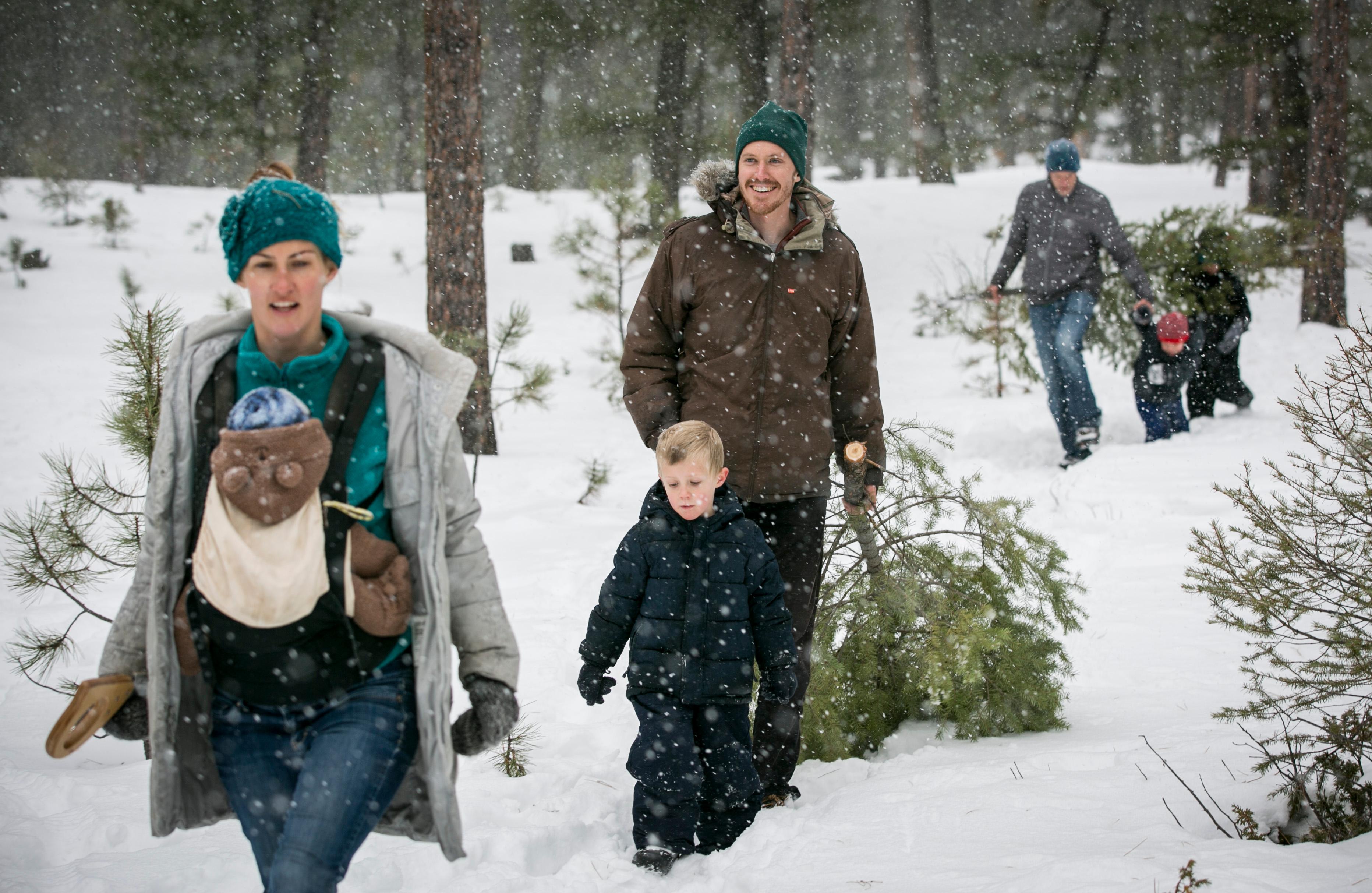
Setting up a family Christmas tree is a time-honored post-Thanksgiving tradition for many Coloradans. While fake trees are easy to find at most department stores, it’s still possible — and oftentimes, cheaper — to chop down and drag home your own fresh evergreen.
Folks interested in cutting their own trees can do so at several National Forests cutting areas. But before you sharpen your axe, you'll need to purchase a tree-cutting permit from recreation.gov or local vendors, such as some Ace Hardware stores or Chambers of Commerce. Permits range in price from $8 to $20, depending on location.
Where can I cut down Christmas trees?
There are three cutting areas close to the Front Range: Pike and San Isabel National Forests, Arapaho and Roosevelt National Forests, and White River National Forest. People on the Western Slope can also visit San Juan National Forest, near Durango.
Permits are for specific districts within each National Forest, so be sure you’re buying the right permit and driving to the correct location.
The closest cutting area to Denver is the South Platte Ranger District in between Will-O-The-Wisp and Aspen Park, but permits at that location are nearly sold out. Only weekday passes remain.
A closer option for those near Colorado Springs is the Pikes Peak Ranger District. Tree cutting is permitted there through December 17.
When are trees available?
For the most part, trees are available from Black Friday through early January.
Some cutting areas have limited date ranges and may sell out of permits. However, barring a Christmas tree craze, there should be plenty of options — especially if you’re willing to drive out to less popular spots.
What should I bring to cut down a Christmas tree?
Some cutting areas may have traction laws in place, so make sure to bring a car with four-wheel drive or chains. Warm clothes, jumper cables, and other emergency supplies are also recommended, as temperatures drop quickly when it gets dark. Having a small shovel in the trunk in case your vehicle gets stuck in the snow never hurts, either.
Forest rangers do not provide tools for tree cutting, so you’ll have to bring your own. Handsaws are recommended and chainsaws are prohibited. Some hardware stores near or on the way to forest-cutting areas may offer rentals.
Once the tree is cut down, you’ll need strong rope or nylon ratchet strips to attach it to the roof of a car. Netting can also help wrap a tree up so it doesn’t come loose or get damaged during travel. AAA recommends measuring your car before picking a tree so you don’t cut down one that’s too big or too awkward to secure.
I’m at a National Forest and don’t know what to cut down – help!
Picking which tree to cut down in a forest is tough, but national forests have tips on how to choose.
Trees must have trunks 6 inches or less in diameter, according to the U.S. Forest Service. Cutting areas also have various maximum heights that you’re not allowed to surpass when choosing a tree. Trees must also be cut within 6 inches of where their tunk goes into the ground.
Some species are completely off limits — such as the Ponderosa Pine, the Colorado Blue Spruce, or the Douglas Fir. Make sure you can tell the difference.
The San Juan National Forest describes the White Fir, an abundant species with flat, flexible blue needles, as “perhaps the best Christmas tree.”
It also recommends the Subalpine Fir or a spruce tree.
Tree cutters are encouraged to cut from a small group of trees instead of a lone-standing tree, to give remaining trees more space to grow.
- Looking for holiday lights in Colorado? Here’s when and where to see them
- From tree lightings to Christmas parades, here’s where you can celebrate the holidays across southern Colorado
- Holiday markets around Colorado offer a way to celebrate and support local artisans. Here’s where you can find them this year








